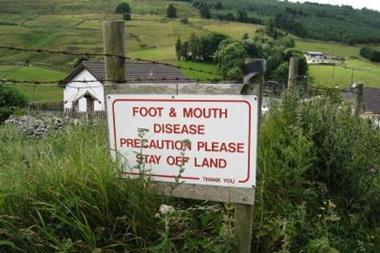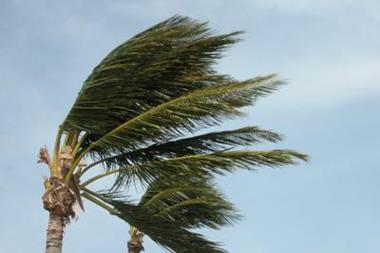From a distance the roads look unremarkably. There are few cars, but it is the middle of the day. Closer up there is clearly something wrong.
This is the picture of a surprisingly large area of New Orleans, 18 months after Hurricane Katrina pushed a wall of water up the Mississippi River and the city's final defences, the levees, failed. The Reinsurance Association of America (RAA) has arranged for delegates arriving early at its catastrophe modelling 2007 conference in New Orleans to volunteer for house construction projects organised by the charity Habitat for Humanity. RAA president Frank Nutter has asked the driver taking us to our site to take a roundabout route so we can see more the affected neighbourhoods.
She shows us what had been her home. It was trashed. Then robbers stole her jewellery. There is still distress in her voice. "I can't look at it. It makes me sick," she says. She takes us past a caravan park. "That's where I live. Ain't it something?" she says.
A couple of streets away are the local shops. It is hard to tell which are functioning. "That was Sammy's deli," she says pointing out a modest restaurant. "They made best po' boys in the city. They're still closed. I don't think they're coming back." Neither are many people. For one reason, our driver explains, many schools have not reopened, and people with children stay where there are schools.
The most shocking area is just behind the newly restored levees. There, all that is left of several streets of modest homes are the driveways. The rest has been cleared. Yellow tape marks the property boundaries. At another spot, though, our driver points at three buildings. "These houses," she says, "They didn't sit where they're at. The water brought them here."
Two days later, at the conference Louisiana governor, Kathleen Blanco, expressed her frustration with the insurance industry. Everyone has over-reacted, she said, the insurers, reinsurers, catastrophe modellers and rating agencies. "If you don't change quickly, Louisiana will have no recovery and you will have lost a good portfolio of business."
Homeowners' premiums had increased by 100-500%, she said, meaning some people simply could no longer afford insurance. Landlords and property developers were also suffering, so housing was not being regenerated. Yet, Louisiana had, protested Governor Blanco, passed new, more rigorous building codes and the budget to enforce them and it was restoring coastal wetlands and building better defences. The federal government was investing $5.7 billion in the levee systems.
The same day, in the neighbouring state of Mississippi, also hard hit by Katrina, the largest insurer, State Farm, said it would not accept any new domestic and commercial property business. "It is no longer prudent for us to take on additional risk in a legal and business environment that is becoming more unpredictable," said State Farm Senior Vice President Bob Trippel.
Responses
The RAA conference was a sell out, and there is so much interest in catastrophe modelling that the association has organised a European conference jointly with the International Underwriting Association (IUA) in London on 19-21 June 2007. The New Orleans event was also the occasion of the first annual meeting of members of the International Society of Catastrophe Managers (ISCM), the brainchild of Ron Nash, chief catastrophe and aggregation manager for XL Global Services, and Andy Castaldi, senior vice president and head of catastrophe perils for the chief underwriting office Americas hub for Swiss Re America.
The New Orleans conference took place against the backdrop of complaints about higher insurance premiums not just in Louisiana but in all the hurricane-vulnerable states.
In January, the Florida State Legislature had passed a package of measures designed to keep down the price of homeowners' insurance by increasing the capacity of the state's Citizen Insurance Company and the Florida Hurricane Catastrophe Fund, which is the reinsurer of last resort. State insurance commissioner, Kevin McCarty, called for insurers to cut their rates for domestic property by 24% as a result.
Bob Hartwig, president and chief economist of the Insurance Information Institute, told a hearing in January of the House of Representatives financial services committee subcommittee on oversight and investigations on the payment of Katrina claims, "Unfortunately, the operating environment that allows insurers to pay sudden and extreme losses like Hurricane Katrina is now under siege in several states. Punitive, burdensome legislation and regulation accompanied by a surge in litigation are already driving-up costs and reducing choices for consumers. Worse still, these measures do nothing to reduce the actual risk faced by people living in harm's way."
Future losses
Hurricane Katrina is the most expensive natural disaster in history. The commercial insurance market had losses of $40.6 billion for onshore property claims, plus about $10 billion energy sector claims. The Federal Emergency Management Agency (FEMA) put its Katrina spending at $29.3 billion. In addition, the National Flood Insurance Program had claims of $15.7 billion, surpassing the next largest event, Hurricane Ivan in 2004, by a factor of 10. These immediately identifiable direct costs come to nearly $100 billion in total.
Yet, worse events are entirely possible. Katrina was not an exceptional storm. A hurricane of this description was classed as only a one in 30 year event in the catalogue of catastrophe modeller AIR Worldwide, for instance. Nor were its effects unpredictable or inevitable. Speaking on the final day of the RAA conference, Ivor van Heerden, associate professor, civil & environmental engineering at the Louisiana State University hurricane center, gave a list of engineering errors and omissions explaining why the defences failed. "Katrina was a man-made disaster," he said.
We know, too, that stronger storms with even more damaging tracks - a repeat of the Great Miami Hurricane of 1926 could produce insured losses of $80-100 billion - are not remote probabilities.
There are other cities like New Orleans where the natural defences, such as the coastal wetlands, have become degraded, and the constructed defences are inadequate. In February 2007, the US Army Corps of Engineers admitted that across the country, there are 122 levees at risk of failing.
California has 37 suspect levees, mainly in the state capital Sacramento, and Washington State has 19. They lead the list. The corps says these levees have received unacceptable maintenance inspection ratings. Failing the maintenance inspection means a levee has one or more problems, such as movement of floodwalls, faulty culverts, animal burrows, erosion or tree growth, that could result in it failing to function as designed.
What Katrina did was to show everyone what such events really look like on the ground in terms of distress and despair and the effect on the whole economy of a region. Had Katrina occurred during an economic downturn, the impact would almost certainly have been worse.
It highlights the points made by Kathleen Tierney, professor and director of the Natural Hazards Center at the University of Colorado at Boulder in her presentation to the RAA conference, when she spoke on the broader effects of Katrina. She said that there is a material difference between disasters and true catastrophes where emergency response systems are paralysed, massive and complex problems exceed the standard response plans, the normal participation of the community is compromised and there are cascading long term effects.
To close her talk, she asked the conference the following questions to close her talk:
+ Is there anyone here who thinks Katrina was unique?
+ Are catastrophic losses on this scale acceptable in the US and worldwide?
+ Does the political will exist to address the root causes of catastrophe?
Lee Coppack is editor of Catastrophe Risk Management.
Lee.coppack@cat-risk.com
www.cat-risk.com



















